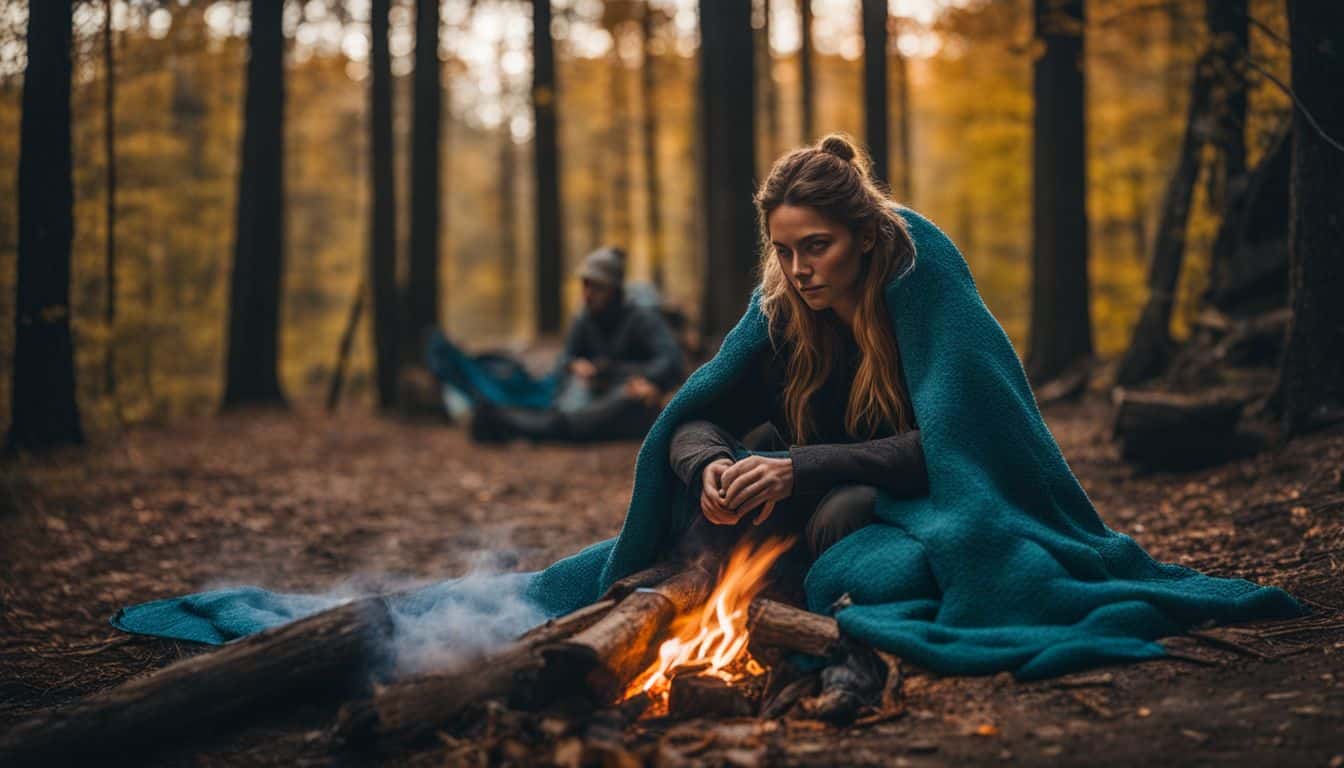Sleeping bag safety is a crucial aspect of camping that often goes overlooked. Whether you’re a seasoned outdoor enthusiast or a first-time camper, understanding how to choose, use, and maintain your sleeping bag properly can make a significant difference in your comfort and safety during outdoor adventures.
Choosing the Right Sleeping Bag
Selecting an appropriate sleeping bag is the first step in ensuring your safety. Consider factors such as size, temperature ratings, and materials. A bag that’s too large can reduce insulation efficiency, while one that’s too small can be uncomfortable and restrict movement. Understanding EN/ISO temperature ratings will help you choose a bag suitable for the conditions you’ll face.
Look for bags with a comfort rating that matches or is slightly below the lowest temperature you expect to encounter. Pay attention to the insulation type as well; down offers excellent warmth-to-weight ratio but performs poorly when wet, while synthetic insulation retains heat even in damp conditions. The shell material should be durable and water-resistant to protect the insulation and increase the bag’s longevity.
Safe Usage Practices
Proper positioning of your sleeping bag within the tent is crucial. Keep it away from tent walls to prevent moisture transfer. Balancing warmth and ventilation is key to preventing moisture buildup inside the bag. Sleeping bag versatility can be enhanced by using appropriate layering techniques with your clothing.
When setting up your sleeping area, use a ground cloth or sleeping pad to insulate yourself from the cold ground. If camping in cold weather, consider using a bag liner to add extra warmth. Be mindful of zippers and drawstrings; ensure they’re functioning properly to prevent cold spots or accidental openings during the night. In warmer conditions, you can unzip the bag partially or use it as a quilt for better temperature regulation.

Maintenance and Care for Safety
Regular cleaning and proper storage are essential for maintaining your sleeping bag’s safety features. Always follow manufacturer guidelines for washing and drying. Store your bag loosely in a cool, dry place to maintain its insulation properties. After each trip, air out your sleeping bag to remove any moisture and odors. For cleaning, use a gentle, specialized cleaner appropriate for the bag’s insulation type.
When washing, use a front-loading machine or hand wash to prevent damage to the baffles. Dry the bag thoroughly, using low heat or air drying. Avoid storing your sleeping bag in a compression sack for long periods, as this can damage the insulation. Instead, use a large, breathable storage bag to allow the insulation to maintain its loft.
Special Considerations for Different Age Groups
For infants and toddlers, camping sleep sacks offer a safe alternative to traditional sleeping bags. These wearable blankets prevent the risk of suffocation and ensure the child stays covered throughout the night.
When it comes to children’s sleeping bags, ensure proper sizing and teach kids how to use them safely. Look for bags with features like interior pockets to keep a flashlight handy and glow-in-the-dark zippers for easy middle-of-the-night bathroom trips.
Adults should consider any medical conditions or mobility issues when selecting a sleeping bag. For those with claustrophobia, a rectangular bag might be more comfortable than a mummy-style bag. Seniors or those with limited mobility might benefit from bags with easier entry/exit systems or additional padding for comfort.
Emergency Preparedness
Choose sleeping bags made from flame-resistant materials and practice quick-exit strategies. Be prepared for unexpected weather changes by understanding how to manage moisture and retain heat in various conditions. Familiarize yourself with your sleeping bag’s features, such as zippers and drawstrings, so you can quickly exit if necessary.
Consider carrying a small emergency kit inside your sleeping bag, including a flashlight, whistle, and small multi-tool. Learn how to use your sleeping bag as an emergency shelter if you need to evacuate your tent. Practice setting up and breaking down your sleep system efficiently to be prepared for sudden changes in weather or unexpected situations.
Environmental Considerations
Practice Leave No Trace principles when camping and consider eco-friendly sleeping bags made from sustainable materials. Balancing environmental concerns with safety features is becoming increasingly important in the outdoor industry. Look for sleeping bags made from recycled materials or those produced using environmentally friendly processes.
When disposing of an old sleeping bag, research recycling options or consider donating it if it’s still in usable condition. Be mindful of your impact on the environment when using your sleeping bag, such as avoiding placing it directly on delicate vegetation. Choose sleeping bags with durable construction to reduce the frequency of replacement and minimize waste.
Innovations in Sleeping Bag Safety
Sleeping bag technology is constantly evolving. Smart fabrics that regulate temperature and integrated safety features like reflective elements are becoming more common. Modular and adaptable sleeping systems offer customizable options for changing conditions. Some new sleeping bags incorporate built-in alarms or tracking devices for added safety in remote areas.
Advancements in insulation technology are producing materials that offer better warmth-to-weight ratios and improved moisture management. Look for sleeping bags with antimicrobial treatments to reduce odors and extend the time between washes, which can be particularly useful on longer trips. Some innovative designs now include built-in mosquito nets or convertible features that allow the bag to be used as a quilt in warmer conditions.
Conclusion
By considering these aspects of sleeping bag safety, you can ensure a more comfortable and secure camping experience. Remember to regularly reassess your sleeping bag’s condition and stay informed about new safety innovations in outdoor gear.
FAQ
Can I use a sleeping bag from my home for camping?
While household sleeping bags might work for backyard camping, they’re typically not suitable for serious outdoor use. They lack proper temperature ratings, moisture protection, and compression features needed for outdoor conditions.
How long does a camping sleeping bag typically last?
With proper care, a quality camping sleeping bag can last 5-10 years of regular use. Signs it needs replacement include significant loss of loft, cold spots, broken zippers, or visible tears in the shell material.
What should I do if my sleeping bag gets soaked during a camping trip?
Find an indoor space or dry shelter to hang the bag, if possible. Use towels to absorb excess moisture. Never use high heat to dry it, as this can damage the insulation. In emergency situations, sharing a tent mate’s bag might be necessary.
Is it safe to share a sleeping bag to conserve warmth?
While sharing can provide extra warmth in emergencies, it’s generally not recommended. Body moisture from two people can compromise the insulation, and movement is restricted, which could be dangerous in emergency situations.
How do altitude changes affect sleeping bag temperature ratings?
For every 1,000-foot increase in elevation, temperature ratings should be adjusted by roughly 3-5°F lower. A bag rated for 30°F at sea level might only be comfortable at 40°F when camping at 3,000 feet elevation.
What’s the best way to pack a sleeping bag for backpacking?
Start by loosely stuffing from the bottom up, rather than rolling, to prevent damage to insulation. Use a waterproof compression sack for backpacking, but switch to a larger storage bag at home. Pack the sleeping bag vertically in your backpack.
Should I change my sleeping bag between seasons?
Not necessarily. A properly rated 3-season sleeping bag (typically 20°F/-6°C) can work year-round with proper layering and ventilation techniques. The key is managing temperature through clothing and venting rather than having multiple bags.
How do sleeping bag ratings differ for men and women?
Women typically need sleeping bags rated 10°F warmer than men for the same comfort level due to physiological differences. A bag rated as 30°F comfort for men is often closer to 40°F comfort for women.
What’s the difference between comfort rating and survival rating?
Comfort rating indicates the temperature at which an average sleeper remains comfortable. Survival rating, often 10-15°F lower, is the minimum temperature for preventing hypothermia, though you’ll likely be uncomfortable.
Can sleeping bags expire?
While sleeping bags don’t technically expire, their insulation can degrade over time, especially if improperly stored. Synthetic insulation loses effectiveness faster than down, showing noticeable degradation after 5-7 years of regular use.

Leave a Reply